#HDI dimension
Explore tagged Tumblr posts
Text
Breaking the gridlock: Reimagining cooperation in a polarized world.

The UNDP released its Human Development Report 2023-24 highlighting that after 20 years of steady progress, inequality between countries at the upper and lower ends of, the HDI has reversed course, ticking up each year since 2020. The 2023-2024 Human Development Report reveals that human development recovery is uneven in nature. While wealthy countries are showing signs of robust recovery, the poorest are struggling. All the member countries in the Organisation for Economic Cooperation and Development (OECD ) have surpassed their 2019 HDI level. But among least developed countries, only one in two have recovered their already low pre-crisis HDI levels. The Human Development Index and its components, ranks countries by 2022 HDI value and details the values of the three HDI components: longevity, education (with two indicators) and income per capita. The table also presents the difference in rankings by HDI value and gross national income per capita, as well as the rank on the 2021 HDI, calculated using the most recently revised historical data available in 2023.
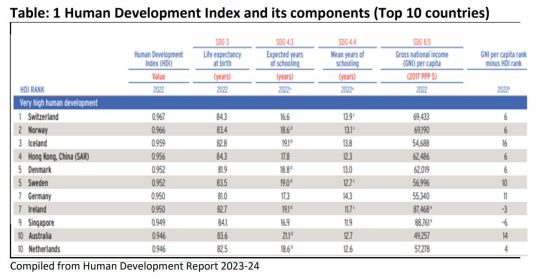
Table: 1 Human Development Index and its components (Top 10 countries) Compiled from Human Development Report 2023-24.
According to the Human Development Report 2023-24, the top 10 countries are Switzerland, Norway, Iceland, Hong Kong, China (SAR), Denmark, Sweden, Germany, Ireland, Singapore, Australia, and the Netherlands. Switzerland and Norway continue to hold their positions as the leading nations with a high level of human development. Denmark has made significant progress, moving up from the 8th to the 5th rank. Conversely, Australia has witnessed a decline, now ranking 10th after previously being placed 5th.
Table: 2 India Outlook Compiled from Human Development Report 2023-24

In 2022, India saw improvements across all HDI indicators – life expectancy, education, and Gross National Income (GNI) per capita. Life expectancy rose from 67.2 to 67.7 years, expected years of schooling reached 12.6, mean years of schooling increased to 6.57, and GNI per capita saw an increase from $6,542 to $6,951. After a drop in Human Development Index (HDI) value in 2021 and following a flat trend over the past few years, India’s HDI value has increased.
#hdi#health dimension#education dimension#standard of living dimension#hdi dimension#key dimensions of human development#undp#GNI per capita#Gross National Income
0 notes
Text

This is a picture of a 10-layer ELIC HDI PCB Board. The PCB board utilizes high-density interconnect technology, resulting in smaller dimensions and higher signal transmission efficiency. Its intricate layer-to-layer connection design makes it suitable for high-performance electronic devices and communication systems.
www.hitechcircuits.com www.hitechpcb.com
6 notes
·
View notes
Text
5 PCB Design Tips for Automotive Applications
In the evolving landscape of automotive engineering, printed circuit boards (PCBs) are the backbone that power the intricate systems within advanced modern vehicles. With the rapid research and development of the autonomous vehicle segment, the importance of PCB design in this field has reached new dimensions. Modern cars rely heavily on printed circuit boards, which act as a central nervous system coordinating many operations, including engine control, sensor systems, and safety measures. This article will discuss the importance of printed circuit boards in automotive applications and provide five design tips to improve their performance. Why are PCBs highly critical components in the automotive industry? For various applications in the vehicle, companies use different types of boards, such as rigid PCBs, flexible PCBs, HDI PCBs, and more. Management of the engine, safety systems, entertainment, and networking are all essential services that are controlled by automotive applications PCB. The reliability and efficiency of these circuit boards are paramount for the overall performance and safety of the vehicle, making them a focal point of innovation in automotive design. Design Tips for Automotive Applications: Modern automobiles are designed for high-performance, compact, and feature-loaded. To mitigate all the critical aspects, PCB design needs critical considerations. Orientation and Placement of Components: Ensuring precise component placement and orientation is crucial for optimising PCB performance, reliability, and manufacturability. Aligning similar components in uniform directions streamlines trace routing and soldering processes during assembly. During wave soldering, aligning components parallel to the solder wave direction prevents solder-related defects.
Accurate Lead Positioning: A short and direct signal trace will reduce signal deterioration and improve system performance. In applications involving high frequencies, this is of the utmost importance. This will reduce interference. By following this approach, the likelihood of crosstalk is decreased, improving signal clarity and avoiding accidental interactions between various circuit components. Signal Routing: Components drawing significant power or current demand effective thermal management strategies to prevent overheating. Utilizing ground and power planes on internal layers of the PCB enhances heat dissipation efficiency. Shielding sensitive signals like clock signals minimizes noise interference, while impedance control preserves signal integrity. Efficient Thermal Management: Sequential placement of larger components followed by smaller ones optimizes PCB layout efficiency. Segregating analog and digital components minimizes signal interference and maximizes signal performance. Maintaining a viewing angle above 45 degrees during solder joint inspection ensures rigorous quality control.

Proper Design Rule Check: Identifying high-heat-generating components is essential for effective thermal management. Leveraging thermal vias and copper planes enhances overall heat dissipation capabilities. Distributing heat sources evenly across the PCB mitigates the formation of localized hot spots. PCB Design is becoming an increasingly important aspect in the ever-changing world of automotive electronics, impacting the dependability and efficiency of automobiles. Engineers can improve the performance and lifespan of automotive applications PCBs by following the above design tips, which range from strategically placing components to effectively managing heat. Explore our comprehensive EMS services today and elevate your boards to new heights of excellence. Connect with us here.
Read More: 5 PCB Design Tips for Automotive Applications
0 notes
Text
Revolutionizing Electronics: The Power of Rigid-Flex PCBs, LED PCBs, and Specialized PCBs by sqpcb.com

In the fast-paced world of technology, innovation is key. The heart of every electronic device, from smartphones to medical equipment, lies in the intricate design of printed circuit boards (PCBs). Advancements in PCB technology have given rise to specialized solutions like rigid-flex PCBs and LED PCBs, enabling unprecedented possibilities in various industries. In this article, we will explore the transformative impact of these specialized PCBs, and how sqpcb.com stands at the forefront of this revolution.
Rigid-Flex PCBs: Bridging the Gap Between Flexibility and Stability
Rigid-flex PCBs represent a groundbreaking advancement in the world of printed circuit boards. Combining the flexibility of flexible PCBs with the structural integrity of rigid PCBs, these boards are uniquely designed to fit into devices with complex shapes and spaces. Rigid-flex PCBs provide unparalleled freedom in design, making them ideal for applications where flexibility and stability are crucial, such as aerospace, medical devices, and wearable technology.
The seamless integration of rigid and flexible sections in these PCBs reduces the need for connectors and additional wiring, enhancing reliability and minimizing assembly complexities. This makes rigid-flex PCBs not only highly efficient but also cost-effective in the long run.
LED PCBs: Illuminating the Future of Lighting Solutions
LED PCBs have revolutionized the lighting industry, offering energy-efficient and long-lasting lighting solutions. These specialized PCBs are specifically engineered to accommodate LED components, ensuring optimal thermal management and electrical performance. LED PCBs are widely used in various applications, including architectural lighting, automotive lighting, and display screens.
The advanced thermal conductivity of LED PCBs ensures efficient heat dissipation, extending the lifespan of LED components and maintaining brightness over time. Additionally, LED PCBs enable precise control over the color, intensity, and direction of light, paving the way for innovative lighting designs and immersive visual experiences.
Specialized PCBs: Tailored Solutions for Unique Challenges
Apart from rigid-flex and LED PCBs, there exists a wide spectrum of specialized PCBs catering to diverse industry needs. These include high-frequency PCBs for telecommunications, impedance-controlled PCBs for RF applications, and high-density interconnect (HDI) PCBs for compact electronics. Each specialized PCB serves a unique purpose, addressing specific challenges in demanding applications.
Sqpcb.com: Your Gateway to Cutting-Edge PCB Solutions
Sqpcb.com stands as a beacon of innovation in the world of specialized PCB manufacturing. With a commitment to quality, precision, and customer satisfaction, sqpcb.com offers a comprehensive range of specialized PCB solutions. Their team of skilled engineers and technicians leverages state-of-the-art technology to produce PCBs that meet the highest industry standards.
One of the key advantages of sqpcb.com is its dedication to customization. Clients can specify their unique requirements, be it the dimensions, materials, or technical specifications, and sqpcb.com ensures that the final product aligns perfectly with these specifications. This level of customization empowers businesses and innovators to bring their visions to life, pushing the boundaries of what is possible in the realm of electronics.
Conclusion
As technology continues to evolve, specialized PCB solutions like rigid-flex PCBs, LED PCBs, and other specialized variants are reshaping the electronic landscape. These PCBs not only enhance the performance and durability of electronic devices but also open doors to unprecedented innovation. With sqpcb.com leading the charge in customized PCB manufacturing, the future of electronics looks brighter and more promising than ever before. Embrace the possibilities, and let specialized PCBs illuminate the path to a new era of technological brilliance.
0 notes
Text
Advancements in Rocket-PCB's 10 Layer ELIC Multilayer PCB Fabrication
Rocket-PCB has revolutionized the PCB industry with its cutting-edge technology, offering high precision any layer HDI multilayer PCB fabrication. Among its impressive array of products is the 10 layer ELIC printed circuit board, crafted with precision and expertise to meet the diverse needs of its users. This article aims to delve into the technical aspects of this remarkable PCB, exploring its materials, design, and manufacturing techniques.
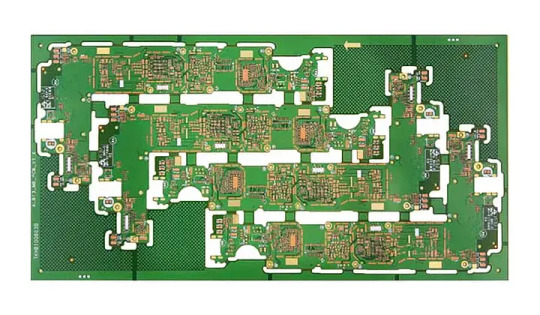
Material and Board Thickness
The 10 layer ELIC PCB from Rocket-PCB is constructed using FR4, a popular substrate material known for its excellent mechanical and thermal properties. FR4 is widely favored in the PCB industry due to its high durability and cost-effectiveness. The board thickness is set at 1.6mm, striking the right balance between stability and space-saving design, making it suitable for various applications, including consumer electronics, industrial equipment, and automotive systems.
Surface Treatment: Immersion Gold
To ensure reliable performance and enhance the PCB’s solderability, Rocket-PCB employs an immersion gold surface treatment. This process involves immersing the PCB in a solution containing gold particles, which form a thin, protective gold layer on the exposed copper traces and pads. The immersion gold surface finish provides excellent electrical conductivity, while also preventing oxidation and ensuring a smooth surface for soldering components.
Stack Up: N+N Configuration
Rocket-PCB utilizes a stack up configuration of N+N for their 10 layer ELIC PCB. The N+N stack up refers to the use of multiple cores and prepreg layers in a symmetrical arrangement to facilitate impedance control and signal integrity. This design allows for the creation of highly complex circuits with improved electrical performance and minimal crosstalk between adjacent signal layers.
Track/Width and Laser Vias
The 10 layer ELIC PCB boasts impressive track/width dimensions of 3/3mil, demonstrating Rocket-PCB’s commitment to providing high precision solutions. The narrow track and spacing enable efficient routing of signals and ensure that the PCB can handle high-frequency signals without signal degradation.
Moreover, the PCB incorporates advanced technology, including laser vias. These vias are created using laser ablation techniques, allowing for smaller via diameters and higher density interconnects. Laser vias are particularly advantageous in high-density designs, where space is limited, and precise signal paths are essential for optimal circuit performance.
Blind and Buried Vias
Rocket-PCB’s 10 layer ELIC PCB fabrication supports blind and buried vias. Blind vias connect an outer layer to one or more inner layers, while buried vias connect two or more inner layers without extending to the outer surfaces. By utilizing blind and buried vias, the PCB achieves higher circuit density, reducing the number of layers required and making it a cost-effective and space-saving solution.
Rocket-PCB’s 10 layer ELIC printed circuit board represents a pinnacle of high precision any layer HDI multilayer PCB fabrication. With its FR4 material, immersion gold surface treatment, N+N stack up configuration, laser vias, and support for blind and buried vias, this PCB exemplifies the cutting-edge technology offered by Rocket-PCB.
Electronics designers and manufacturers can leverage the capabilities of this advanced PCB to meet the demands of modern electronic devices with complex circuitry and high-frequency requirements. Rocket-PCB continues to lead the industry in providing innovative solutions, empowering businesses to create reliable and efficient electronic products for a wide range of applications.
0 notes
Text
0 notes
Text
KOSE COSMEPORT GRACE ONE Perfect Gel Cream EX with Collagen and Retinol Derivative - Essential Hub - Set of 2 Pieces - 2 x 100 G.,White Price: [price_with_discount] Customer satisfaction rating (according to Amazon product Details) KOSE COSMEPORT GRACE ONE Perfect Gel Cream EX with Collagen and Retinol Derivative - Essential Hub - 2 Piece Set - 2 x 100 G. - Return Policy: These products are NOT returnable and NOT refundable as they are shipments abroad unless The products are not correct as shown on the Amazon page or damaged. - Made in Japan - Contains CPX collagen and retinol derivative - Contains squalane, astaxanthin and hyaluronic acid - Contains pomegranate peel extract and rapeseed oil fatty acid - Firmly hydrates skin - Gel for skin 50+ years old - Ornate Rose Blossom scent How to use - After washing your face, take 2 to 3 pearl grains onto your fingertip - Apply evenly to face and neckline, chin, both cheeks and lower back nose - Press gently to cover the face with the entire palm of the hand Product Dimensions: 2.76 x 2.76 x 5.12 inches; 14.88 ounces Item model number : KOSE GRACE ONE Perfect Gel Cream Manufacturer : Perfect Gel Cream ASIN : B09HC1F65F Country of Origin : Japan - Return Policy: These products are NOT returnable or refundable as they are shipped abroad, unless the products are not correct as shown on the Amazon page or damaged. Made in Japan Contains CPX collagen and retinol derivative Contains squalane, astaxanthin and hyaluronic acid. Ingredients: Water, DPG, Glycerin, BG, Ethanol, Meadowfoam Oil, Copolymer (PEG-240 / Decyltetradeceth-20 / HDI), Astaxanthin, Rosa Canina Oil, Glycine, Atelocollagen Succinyl, Pomegranate Peel Extract, Dipalmitate Ascorbyl, Tocopherol, Retinol Palmitate, Sodium Hyaluronate, Hematococcus Pulviaris Extract, Hydrolyzed Elastin, Hydrolyzed Hyaluronic Acid, Water Soluble Collagen, Water Soluble Collagen Cross Polymer, BHT ((Acrylates / (C10-30) Alkyl Acrylate)) Crosspolymer, Oleyl Oleic Acid, Corn Oil, Dicapric Acid PG, Diglycerin, Dimethicone, Squalane, Stearoylmethyl Taurine Na, Cetearyl Alcohol, Tri(Caprylic Acid/Capric Acid) Glyceryl, Sorbitan Palmitate, Hexa(Hydroxystearic Acid/Stearic Acid /(rosinic acid) Dipentaerythrityl, behenyl alcohol, lauric acid K , phosphoric acid 2Na, sodium phosphate, sodium hydroxide, glycerides of hydrogenated rapeseed oil fatty acids, ethylparaben, pheno xyethanol, methylparaben, fragrance Skin type: Normal #KOSE #COSMEPORT #GRACE #Perfect #Gel #Cream #Collagen #Retinol #Derivative #Essential #Hub #Set #Pieces #G.White See more related items: KOSE COSMEPORT GRACE ONE Perfect Gel Cream EX with Collagen and Retinol Derivative - Essential Hub - Set of 2 Pieces - 2 x 100 G.,White Read More: This site is affiliated with Amazon
0 notes
Photo

Regional HDI in Europe and MAC
by u/Joeyon
The source for the data is here: https://globaldatalab.org/shdi/shdi/
I coloured the maps manually, so there may be mistakes.
HDI is a composite index score based on three dimensions:
Life expectancy at birth
Mean years of schooling and expected years of schooling
GNI per Capita (PPP international dollar)
52 notes
·
View notes
Text

Increasing Dimensions of HDI and reduced India’s placings
About HDI:
Human Development Index is a combined index of the life expectancy, education, and per capita income indicators of a country. The index was developed by Mahbub Ul Haq, a Pakistani economist and ex-finance minister in the year 1990. The purpose of introducing such an index was to ” shift the focus of development economics from national income accounting to people centred policies”.
In the year 2010, a new Inequality-adjusted Human Development Index was introduced. In a society where there is perfect equality, the difference between HDI and IHDI will be zero. And the greater will be the difference between the two indexes the greater shall be inequality in the distribution of food, health, and education.
New Dimension of HDI:
This year the amount of per capita carbon emission was taken into account for placing the countries. This metric is called the “Planetary Pressure Adjusted Human Development Index”.
Almost 50 countries will fall out of the category of “very high human development group” due to the introduction of this new metric. Australia shall fall 72 places whereas the United States will fall 45 places.
#economy#india#news#human resources jobs#finance#studyblr#student#study blog#studystudystudy#short stuff#oh wow#wow news#wow wow wow
2 notes
·
View notes
Text
A comparison of Denmark and Sweden, and more specifically their respective capitals, with reference to some other European countries
Most bikable city: Copenhagen appears to be the most bikable city in the world. WIRED even names their ranking “Copenhagenize”. Neighboring Swedish Malmö is also very bikable
HDI: Norway, Switzerland, Ireland, Sweden, Denmark
Restaurants: Copenhagen, according to 2 articles
Vibe: Stockholm seems to be seen as posh and proper, Copenhagen is grittier but more carefree. It’s a little hard to tell, but “slightly gritty by Scandinavian standards” might be the right balance for me
Elevation: Stockholm is 15m, Copenhagen 10
Population: Stockholm is bigger. Copenhagen is bigger if you include the binational Øresund region. I’m going to rate this one as a draw. Stockholm is perhaps the overall more ‘important’ city
Population density: Denmark is much more densely populated, almost twice as much so as Ireland. Sweden is more sparely peopled by a factor of 5 or so
Climate: Copenhagen is a bit warmer with a mean of 9.1; Stockholm is cooler at a 7.6. Copenhagen’s climate is more temperate because of its maritime influence, which seems preferable.
Economic freedom: Denmark does best of the Nordic countries. Switzerland and the Netherlands also do well.
Most liveable cities: Copenhagen does best of the Nordic countries. Other high-ranking cities are Zürich, Vienna, Vancouver and Munich. There’s a reasonable amount of variation in the lists, suggests some degree of noise or subjectivity in these rankings However it speaks fairly directly to what I’m interested in
Cool name: “Copenhagen” just sounds cool
Jewish population: Sweden’s around 20,000 as opposed to like 6,000 in Denmark
GDP per capita (PPP): Similar, ambiguous. Possibly Denmark. Ranking is something like Norway = Switzerland > Netherlands = Denmark = Sweden > Finland
GDP nominal: Switzerland > Norway = Ireland > Denmark > Netherlands > Sweden
Cost of living: Stockholm appears to be significantly cheaper. Wages are lower too, but I think the balance still leans in Stockholm’s favor
Press Freedom Index: Norway > FInland > Denmark > Sweden
Introduction of Legal Same-Sex Marriage: Sweden was 2009, vs 2012 for Denmark. Really both are pretty good on this front.
World Happiness Report: Denmark is second, after Finland
Social Progress Index: Norway > Denmark > Finland > Sweden
Wealth equality: Denmark has a lower Gini coefficient, around 0.838 compared to Sweden’s 0.867. This may reflect Sweden having more successful companies more than anything else.
Democracy Index: Norway > Iceland > Sweden > New Zealand > Finland > Ireland > Denmark. Denmark is at a 9.22 compared to 9.39 in Stockholm
Factor X: Denmark has it
Hexagon: Denmark’s in it
Coffee consumption per capita: For some unknown reason, the same countries top this list as top many of th other indices referenced above. Denmark comes out higher than Sweden
Milk consumption per capita: Finland > Sweden > Switzerland > Ireland > Denmark > Noway. Naturally there’s some uncertainty. Relatively poor showing for Denmark here, with 277 kg of milk per person per year
Natural beauty: Stockholm would appear to be superior on this dimension
Being made up of cool islands: Stockholm wins
My bias: I seem to be biased in favor of Copenhagen. I seem to want to make the case that it’s the better choice
3 notes
·
View notes
Text
What human development entails?
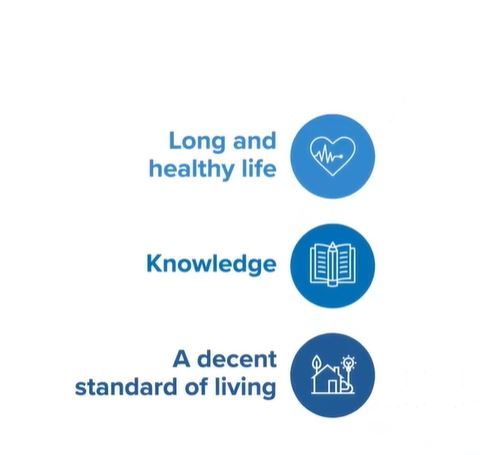
The Human Development Index (HDI) is the geometric mean of normalized indices for each of the three dimensions.
The health dimension is assessed by life expectancy at birth, the education dimension is measured by mean of years of schooling for adults aged 25 years and more and expected years of schooling for children of school entering age. The standard of living dimension is measured by gross national income per capita. The HDI uses the logarithm of income, to reflect the diminishing importance of income with increasing GNI. The scores for the three HDI dimension indices are then aggregated into a composite index using geometric mean. The HDI can be used to question national policy choices, asking how two countries with the same level of GNI per capita can end up with different human development outcomes. These contrasts can stimulate debate about government policy priorities. The HDI simplifies and captures only part of what human development entails. It does not reflect on inequalities, poverty, human security, empowerment, etc. The HDRO provides other composite indices as broader proxy on some of the key issues of human development, inequality, gender disparity and poverty. A fuller picture of a country's level of human development requires analysis of other indicators and information presented in the HDR statistical annex.
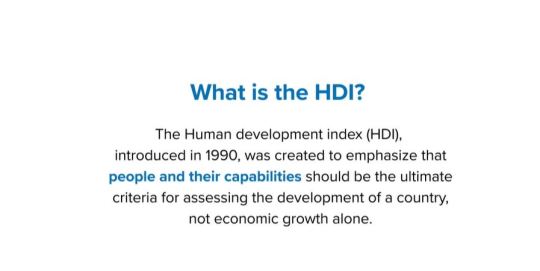
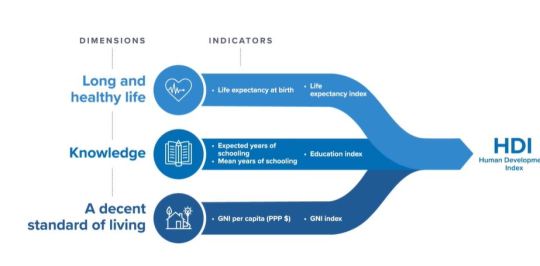
#HDI dimension#economic development#human development#health dimension#standard of living dimension#education dimension#GNI per capita
0 notes
Text
ECONOMIC DEVELOPMENT OF THE PHILIPPINES DURING AQUINO III AND DUTERTE ADMINISTRATION
Economic Development of the Philippines during Aquino III and Duterte Administration

The Philippines is considered one of the countries in East Asia Pacific region having the most vibrant and dynamic economy. Its economy has been changing and growing steadily over these past decades. The Philippines has transition in its economy, from being one based on agriculture to more on services and manufacturing in which it is primarily considered now as newly industrialized country. Its economic dynamism is rooted in strong consumer demand supported by its robust remittances, vibrant labor market where business activities are booming with notable performance in the services sector.
Timely measures are indeed important to cushion against the crisis and economic shocks that might affect the country’s economic growth. This is why state leadership styles and strategies contribute a big factor in making Philippines as a country, a better one. Different administrations have past and ruled during their terms just like the former President Benigno Simeon Cojuangco Aquino III and the current President Rodrigo Roa Duterte. Comparatively, these two have their distinct advocacies and leadership approach.
President Benigno Simeon Cojuangco Aquino III Administration


Under Benigno Aquino’s administration, the gains of good governance are being translated into the development of the quality of life of the Filipinos, specifically the poor and the vulnerable. The Human Development Index is a summary measure for assessing long-term growth in three basic dimensions of human development: a long and healthy life, access to knowledge and a decent standard of living. During his term, Philippines’ HDI value reached 0.702 and the cornerstone of the Aquino administration’s inclusive growth agenda has always been investing in the Filipino people, such as the social services, education system and the goal of universal healthcare is what it has always been pursuing. Under Aquino’s presidency, he signed an Act Amending the National Health Insurance Act of 1995 or the RA 10606, which mandates the provision of comprehensive health care services to all Filipinos and the Enhanced Basic Education Act of 2013, institutionalizing the K to 12 Basic Education Program that provides sufficient time, readiness for tertiary education and preparation for future specific career options.

The purchasing power of the citizens during Aquino’s administration wasn’t quite favorable to the consumers or the citizens since Philippines faced crisis that time. Inflation has more than doubled in less than a year after the Super Typhoon Yolanda (Haiyan) hit the country in November 2013. It damaged crops, have devastated livelihoods and an expanded truck ban in Manila delayed shipments which leads to price hike. The said inflation was also due to the increased price of rice which caused a toll to the purchasing power of the citizens.

There were number of significant commitments with regards to supporting entrepreneurship, innovation and attaining free and open trade and investment among member economies during President Aquino’s administration. Through the Access of Small Enterprises to Sound Lending Opportunities, this has the acronym of ASENSO, which means progress in Tagalog, had helped enterprises by providing assistance to them. The Magna Carta implementation for MSMEs has also played a significant role in their microfinance. One of the most significant areas in which government had done during his presidency term was educating MSMEs about Doing Business in Free Trade Areas, which aids them get relevant or proper market information and avail of preferential tariffs. In addition, the administration institutionalized efforts through the Go Negosyo Act of 2013, which has the objective of promoting ease of doing business and assisting MSME’s forward access to services.
President Rodrigo Roa Duterte Administration


President Rodrigo Roa Duterte became the 16th President of the Republic of the Philippines after a landslide victory with 16.6 million votes. He is the first president from Mindanao, and also the first local chief executive to get elected straight to the Office of the President. President Duterte has constantly guaranteed the Fiipino people of his promise to continue and sustain the previous administration’s momentum for social development as well as to confront the challenges it failed to address by introducing radical or progressive changes. During his administration, Philippines’ HDI value reached 0.712— which put the country in the high human development category— positioning it at 106 over 189 countries and territories. According to UNDP, between 1990 and 2018, the country’s HDI value increased from 0.590 to 0.712, an increase of 20.6%.

Education was made affordable and accessible with the “University Access to Quality Tertiary Education Act” or known as the Republic Act (RA) 10931 and the education budget was increased, registering a 32% growth increase from the previous year. Also, the health budget increased by 19% with more than 50 billion budget allocated to expand health financing under Philhealth, providing Filipinos free access to healthcare services. Duterte’s administration emphasizes that through social development and infrastructure, he can provide decent and dignified future for the Filipinos. He was able to boost the Filipino consumers’ purchasing power through the implementation of the Tax Reform for Acceleration and Inclusion (TRAIN) Law, believing that improving the income tax system would be fairer and more efficient as it put more amount of money in the pockets of the consumers and guaranteed strong domestic demand in the economy, while also raising the needed resources to boost economic activity.

President Duterte vows to support entrepreneurship and innovation through the Philippine Innovation Act he has signed which aims to help micro, small and medium enterprises (MSMEs) become part of the global market. Republic Act No. 11293, aims to takeout obstacles to innovation by “suppressing bureaucratic hurdles,” and stimulate the entrepreneurial attitude to revitalize growth of local businesses. To attain the country’s innovation goals, the law requires the government to have innovation centers, technology programs, technology platforms, innovation networks, cluster policies, and human capacity-building programs. For good measure, the National Innovation Council (NIC) was formed and is tasked to develop and advance the country’s innovation goals and priorities.

The previous and present administration has their different ideology, advocacy and definitely a league of their own, the promised straight path by the former and the promised change and end of poverty by the current. Past administration indeed left or turned over a growing stabilized economy and somehow, the current administration benefited from it. But in my perspective, President Duterte’s administration comparatively had brought more economic development than the former administration. Aside from the fact of Manila’s sliding corruption ranking due to his fight against corruption to end poverty, the Philippines' per-capita GDP reached an all-time high under his administration demonstrating competence in protecting and sustaining health of the economy. Though President Rodrigo Duterte is usually being portrayed by media as barbaric and has a terrible human rights record yet, there is no denying that the average Filipino is doing better under President Duterte’s administration.
2 notes
·
View notes
Text
Week 1
Step 1: Identify your Data Set: Gapminder
Step 2: Identify your research question: is there a correlation between cell phone use, life expectancy and HDI
Indicator name: Use of Cell Phone (per 100 people) Definition of indicator Cell phone users are people with access to cellular telephones Source organization(s) World Bank Link to source organization http://www.worldbank.org/ Link to complete reference http://data.worldbank.org/indicator/IT.CEL.SETS.P2
Indicator name: Internet Use (per 100 people) Definition of Indicator Internet users are people with access to the Internet Source organization(s) World Bank Link to source organizationhttp://data.worldbank.org/indicator Complete referenceWorld Development Indicators Link to complete referencehttp://data.worldbank.org/indicator/IT.NET.USER.P2
Indicator name: HDI Source organization(s) UNDP Definition of Indicator: Human Development Index is an index used to rank countries by level of “human development”. It contains three dimensions: health level, educational level and living standard. Source organization(s) UNDP Link to source organization http://hdr.undp.org/en/ Complete reference UNDP Human Development Report Link to complete reference http://hdrstats.undp.org/en/indicators/103106.html
STEP 3. Prepare a codebook of your own: I add to my codebook variables reflecting access to cell, landline and internet communication.
STEP 4. Identify a second topic that you would like to explore in terms of its association with your original topic. I selected HDI, or Human Development Index (see http://hdr.undp.org/en/content/human-development-index-hdi for a full definition). This is an index that mashes together data about income, education, and life expectancy.
STEP 5. Add questions/items/variables documenting this second topic to your personal codebook. Is there a correlation between access to communication and HDI? I added Human Development Index (HDI) to codebook.
STEP 6. Perform a literature review to see what research has been previously done on this topic. Use sites such as Google Scholar (http://scholar.google.com) to search for published academic work in the area(s) of interest. Try to find multiple sources, and take note of basic bibliographic information.
Literature Review
Search strings:
access to communication and HDI, access to communication and development, cell communication and human development
1. Christian Fuchsa, “Africa and the digital divide” Telematics and Informatics, Volume 25, Issue 2, May 2008, Pages 99–116. Argue that the digital divide is a deeply structural, not just technical problem. 2. Kay Raseroka, “Access to Information and Knowledge,” Human Rights in the Global Information Society edited by Rikke Frank Jørgensen 3. Birdsall, Stephanie and William Birdsall, GeographyMatters: mapping technology access and human development, http://ojphi.org/ojs/index.php/fm/article/view/1281/1201
4. Koroma, Joseph T., Dissertation: “Geography, Poverty, and Development Policy in the New African Millennium: Monitoring the Millennium Development Goals Through Human Development,” 2008 KEY SOURCE 94-95 explore the relationship between cell phone and land line penetration and HDI and find a 95% positive relationship. Dissertation at Indiana State University, 2008, UMI # 3305416
Abstract: “The eight United Nations Millennium Development Goals (MDGs) are to eradicate extreme poverty and hunger, achieve universal primary education, promote gender equality and empower women, reduce child mortality, improve maternal health, combat HIV/AIDS, ensure environmental sustainability, and develop a global partnership for development. The eighth goal (MDG 8), aims to develop and strengthen a global partnership for development between rich and poor countries. Three main components of the latter (MDG 8) aim to accelerate the infusion of official development aid (ODA), liberalize international trade, and introduce information and communication technologies (ICT) in the hope of creating a conducive environment for the manifestation and realization of human and economic development in developing countries. Most of the MDGs have been hailed as quantifiable and time bound. Unfortunately, MDG 8, which is the ways and means goal, lacks quantifiable targets and comparable accountability. Further, the emphasis on development aid, technology, and international trade based on comparative advantage is similar to the old modernization perspective popular in 1950s and 1960s. Are the MDGs an inadvertent avenue by which to create dependency between the weak peripheral states of Africa and dominant, core countries, and their multilateral institutions? I perform regression analyses with Human Development Index (HDI), a proxy for the MDGs, as my dependent variable, and international trade, official development aid, and information and communication technologies as my independent variables in order to answer the research question.
STEP 7. Based on your literature review, develop a hypothesis about what you believe the association might be between these topics. Be sure to integrate the specific variables you selected into the hypothesis.
Hypothesis: access to communication influences HDI (Human Development Index), but is not in itself sufficient to ensure improved HDI. My hypothesis is that in some instances with access to information, HDI will not be as high as one might predict, perhaps because if extrinsic factors such as political violence.
1 note
·
View note
Text
Brazil Falls One Position in Development Ranking
Country occupies 79th place of 189 in HDI, behind Argentina, Uruguay and Sri Lanka

Brazil dropped a position in the HDI (Human Development Index) global ranking in 2018. It now ranks 79th out of 189 countries and territories, tied with Colombia and behind Chile, Argentina, Uruguay and Sri Lanka, for example. The list is led by Norway.
The index is released by the UNDP based on data on life expectancy at birth, education and per capita income. The closer to 1, the higher the development. Last year Brazil reached the value of 0.761, an increase of 0.001 compared to 2017 (or 0.13%).
Source.
Some info lost in translation:
In 2018, Brazil's index was 0.761, an increase of 0.001 over the previous year (or 0.13%). Although it shows progress, the value was insufficient to prevent the country from losing its position in relation to the others.
Brazil had been presenting a “sustained growth” of the HDI in the last 30 years, when it managed to move to the category of high HDI, the third among four possible. Compared to the last four years, however, the data point to a slower pace for this advance.
In 2018, Brazil experienced a slight increase in the rate of life expectancy at birth and stability in schooling rates, while income has not yet recovered from its fall after 2015.
The report provides an indicator that “discounts” one value of each dimension that makes up the HDI according to its level of inequality (either in life expectancy at birth, in education, or in income). This metric is called the IAHDI (Inequality-adjusted HDI). From 0.761, Brazil’s HDI becomes 0.574 when adjusted for inequality — a loss of 24.5 percent and of 23 positions. Brazil is the country that most loses positions because of this.
In income, the differences become even more visible — especially when the concentration levels between the richest and the poorest are observed. Currently, Brazil still has the second largest concentration of income in the richest 1% of the population: 28.3%. It is just behind Qatar (29%).
6 notes
·
View notes
Text
IPC-6012 Qualification and Performance Specifications for Rigid Printed Boards
New Post has been published on https://piek.international/ipc-6012-qualification-performance-specifications-rigid-printed-boards/
IPC-6012 Qualification and Performance Specifications for Rigid Printed Boards

If we talk about purchasing rigid bare board (or PCB) manufacturing the IPC-6012 is the most used document. This is one of a series of documents, also called the Qualification and Performance Specifications for Printed Boards. At the basis of this series is the IPC-6011 standard, in here we find definitions for the product classes, and general requirements for instance on documentation, qualification assessment, quality assurance etcetera. The IPC-6012 is the document that contains the Qualification and Performance Specifications for Rigid Printed Boards. Other standards in this series are IPC-6013, IPC-6015, IPC-6017 and IPC-6018.
Topics in this IPC-6012 document are: Material requirements, Visual inspection requirements, Solder mask requirements, Electrical requirements and electrical tests to be performed, Cleanliness requirements and the applicable tests. Also, a variety of special requirements that might be specified by contract by the customer are listed and described. Also, definitions and requirements about rework and repair are to be found. One chapter concentrates on Quality Assurance Provisions.
The IPC-6012 also addresses the minimal thicknesses of final finishes and copper plating in the through-holes and via’s. In general, one might say that the dimensions and tolerances commonly used in circuit board manufacturing are implemented in numerous tables.
Catering for the electronics industry for space applications is the addendum to this general IPC-6012D, the IPC-6012DS document, providing specific criteria for this area. Specific automotive application considerations can be found in the IPC-6012DA. Both addendums built up on the general IPC-6012 providing typically used criteria for these areas.
For more information regarding the actual processes and materials used at the production stages and for in depth information on the applicable tests to be performed for quality assurance the IPC-6012 is the best if rigid printed circuit boards are involved. These can be single-sided boards, multi-layers, HDI boards, boards with integrated passive components and metal core boards. It is the document of choice for process engineers and purchasers at printed circuit manufacturers, but designers as well as assembly process engineers at the EMS or OEM might benefit greatly from it.
If you consider using this document, it might be a good idea to learn all the ins- and outs by attending an IPC-6012 certification training based on them. These certification trainings are provided by PIEK on both documents and will increase your knowledge level. Furthermore, training will help you in using the criteria correctly and avoid misinterpretation, which might save time and money. Profit from the extensive experience the PIEK trainers have on the use of these documents in daily practice and avoid the pitfalls in daily life caused by misinterpretation.
1 note
·
View note
Photo

New Subnational Human Development Index of the world in 2018.
Ardolon:
Human Development Index means: The Human Development Index (HDI) provides a single index measure to capture three key dimensions of human development: a long and healthy life, access to knowledge and a decent standard of living. The HDI utilizes four key metrics: life expectancy at birth – to assess a long and healthy life.
It already uploaded a map with data from 2017. Now I improved the map with data from 2018 and removed some mistakes. I couldn't find subantional data for some countries e.g.: Syria (due to the civil war), Israel, Sri Lanka, Iceland, Oman, UAE, Qatar.
135 notes
·
View notes